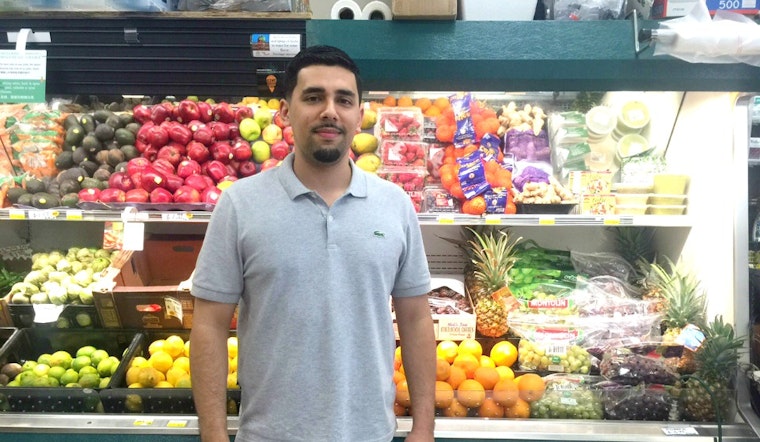
Fadhl Radman, owner of Radman’s Produce Market at 201 Turk St., stands alongside his refrigerated produce display, a proud participant of the Tenderloin Healthy Corner Store Coalition. The TLHCSC had humble beginnings as a tobacco prevention/leadership grant awarded to youth at the Vietnamese Youth Development Center at 166 Eddy St. These youth leaders helped bring together various Tenderloin organizations and residents to form the Coalition in the spring of 2012.
Radman’s is currently one of three stores that have undergone physical store redesigns, including Dalda’s Grocery on Eddy and Taylor, and most recently, Amigo’s Market on Ellis and Leavenworth. Mid City Market on Geary and Larkin will be upgraded on June 10th.
TLHCSC supplied lighting and produce inserts for Radman’s produce display, new dry goods bins and adjustable shelving throughout the store.
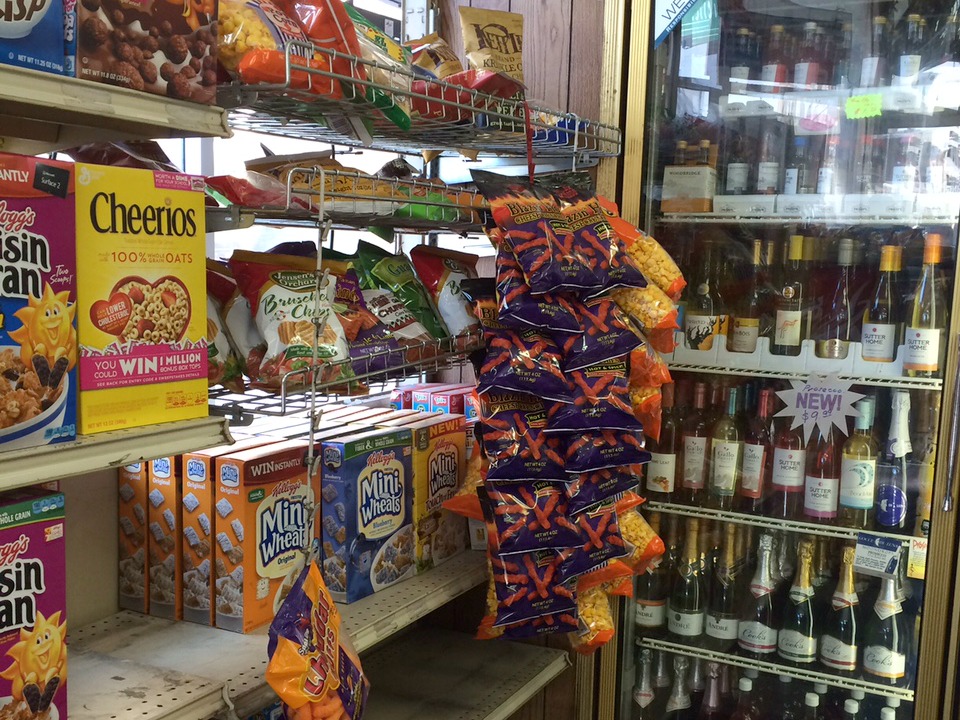
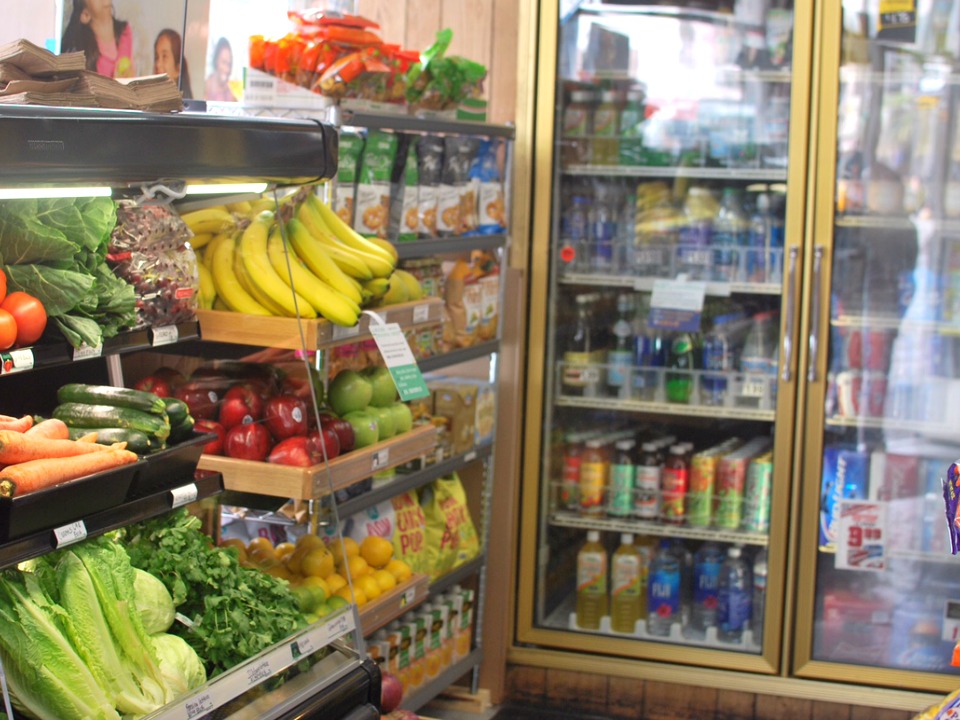
Lead by Jessica Estrada (now co-coordinator of the TLHCSC alongside Ryan Thayer at Tenderloin Neighborhood Development Corporation), “Team Let’s Stop Tobacco” proved to be much more than a campaign against the rampant sales of tobacco in the TL. Producing results from a comprehensive survey of 46 corner stores in the neighborhood, their findings reflected the lack of high quality produce and healthy food items available to residents in the neighborhood.
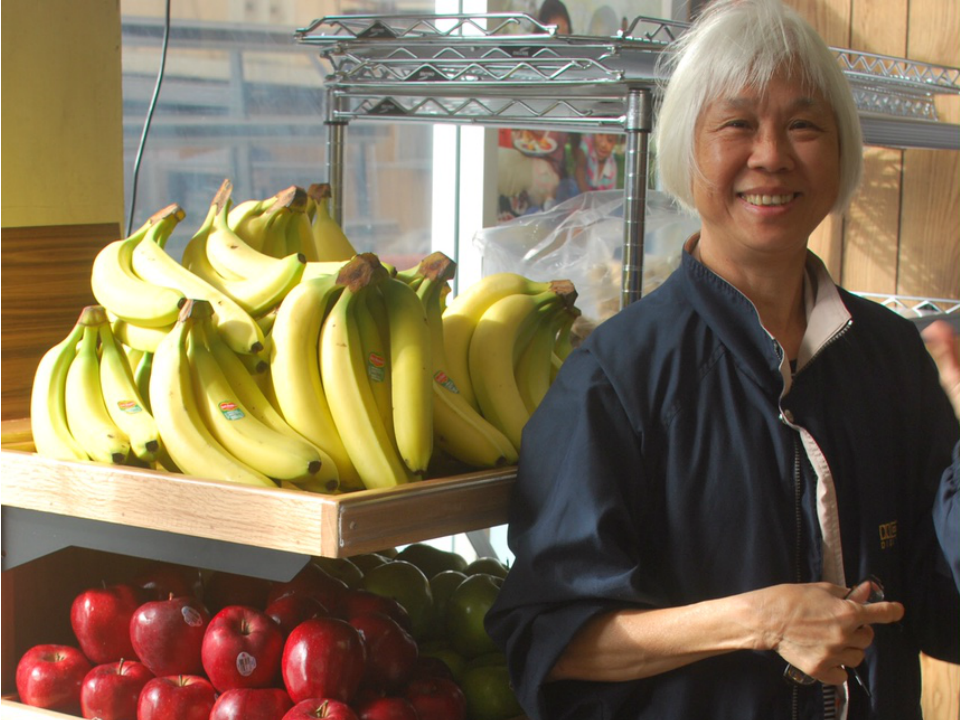
Of those stores surveyed, 42.4 percent sold no produce, and those that did provided meager offerings, in poor condition. These findings quickly gained community attention and propelled the development of the Tenderloin Healthy Corner Store Coalition.
“When you have 70 corner stores in the neighborhood that becomes the norm of what is available," said Thayer. "We have some of the highest concentrations of chronic health conditions in San Francisco. Access to fresh, healthy and affordable food is a fundamental human right; food is medicine, it’s a preventative health and wellness measure and a lot of chronic health conditions are connected to an overconsumption of processed foods saturated with sugar, fat, and sodium. We are hoping to create an awareness of the importance of healthy food consumption and focus on the positive aspect. There are a lot of positive things happening in the neighborhood and let’s focus on that through food."
In the summer of 2012, TLHCSC conducted a survey of 640 Tenderloin residents, and found that they were spending roughly half of their monthly food budget outside the neighborhood.
“This averages to about $50 a month leaving the neighborhood per household," said Thayer. "Then multiply that by households and that comes to roughly $900,000 that leaves the neighborhood every month (over $10 million a year). Residents are going to Safeway, the Mission, and Chinatown; that is money that can be spent in these stores. We used these statistics to get the stores on board. This is potentially money that could be redirected to the community."
Through their three-year tobacco reduction grant from the state's Tobacco-Related Disease Research Program (TRDRP) and UC Berkeley, so-called Food Justice Leaders are scheduled to visit roughly 52 local corner stores and conduct store assessments. These assessments are comprised of 60-70 questions surveying the current availability of healthy food items (ie. availability of whole wheat bread, high fiber cereals, produce, etc). Each store receives a rating and is listed in the TLHCSC’s annual healthy shopping guide (see HealthyTL for a copy of the 2013 and 2014 shopping guides).
“We work with city agencies, community members, UCSF and UC Berkeley. We have a steering committee that helps with strategic decision-making, eight Food Justice Leaders that all live in the TL, all made up of different cultural backgrounds and ages, and they are the ones that do all the on-the-ground work,” said Thayer.
These Food Justice Leaders also serve as liaisons, building relationships with the storeowners.
“They are the face of the work that is being done because they live here in the neighborhood,” said Thayer.
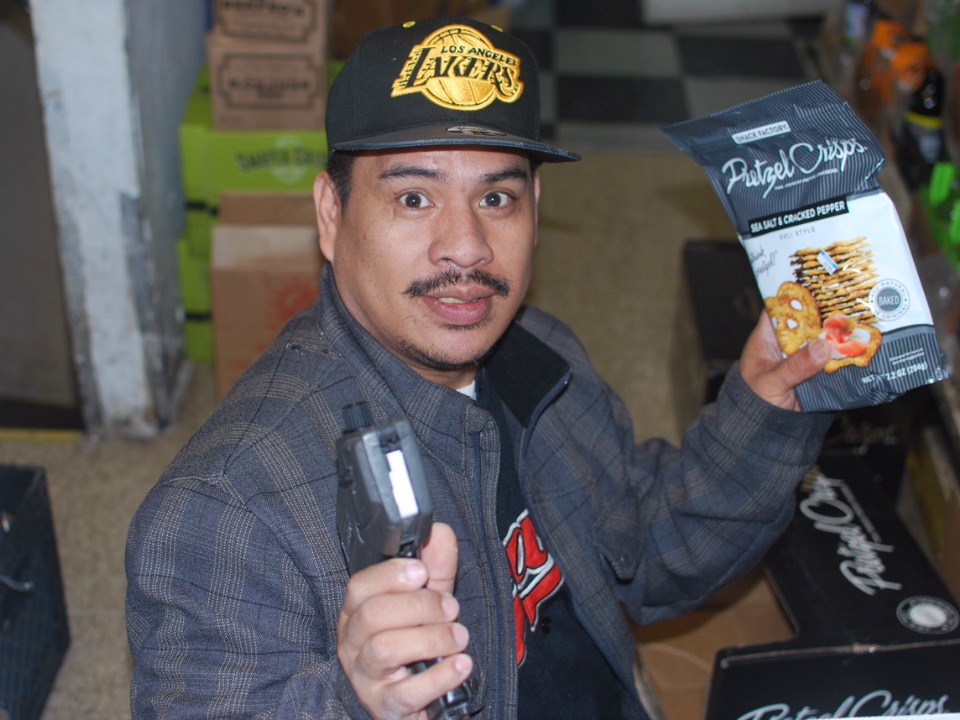
“The Food Justice Leaders work hard to outreach to their neighbors by conducting monthly taste testings and participating in various events' said Estrada. "It's very important for this project to be community-led in order to increase the demand for healthier food and produce in Tenderloin corner stores."
“We need to prove to store owners that selling healthier food is viable for their business—hopefully decreasing the saturation of cheap alcohol, tobacco and junk foods in their stores over time."
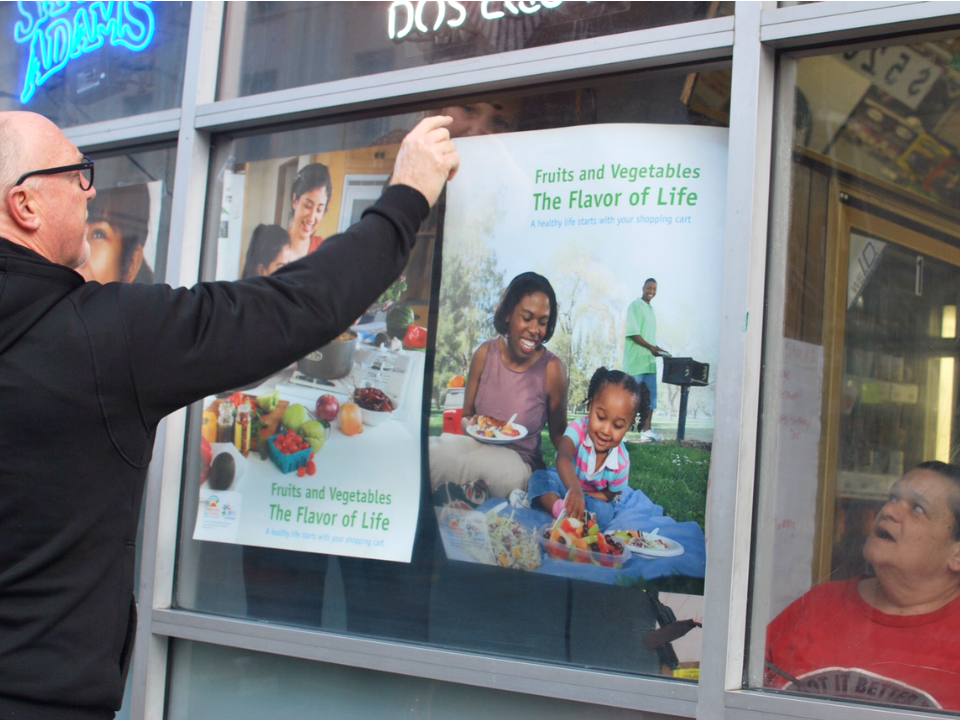
Estrada calls the store redesign process and model that each store goes through “a stool with three legs.”
“All three legs and expertise are necessary to ensure the store redesign is successful. The first leg is the physical work and technical assistance; an architecture and design firm, Sutti Associates, works with the store owners to create pre- and post-schematics, including recommendations to add healthy product and the needed equipment to the store,” said Estrada.
“The second leg of the stool is improving the stores’ business operations. Depending on the needs of the store owner, we provide resources and trainings on getting access to loans, Point of Sale systems (POS), and developing business plans.”
“The third leg is Ryan’s and my work, which is a lot of the ground work; we work with community members, resident leaders, and Food Justice Leaders to provide marketing for the store. This includes planning grand re-opening and taste testing events, providing in-store promotional signage, working with the store owner to provide coupons or promotions to attract residents to buy the new healthy products”.
An individualized development plan (IDP) outlining the work and incentives of the 3 legs of the stool is signed by each store owner. In exchange, the store owner agrees to various store improvements (generally over a three year contract, which varies by store) including increased offerings and placement of healthy food products and produce (35 percent of their selling space should be devoted to healthy food products), decreased influence of alcohol and tobacco (no more than 20 percent of their shelf space), and unhealthy food/beverage advertisements, and various other safety and cleanliness standards.
“Store report cards are conducted bi-monthly by Food Justice Leaders to provide additional support to each store participant, as well as be sure that the stores are complying with their Individual Development Plans. In this way, there is continuous engagement with the store owners, resident leaders, and program staff—we all need work together to make this shift/redesign successful,” said Estrada.
“We want to work with stores around what works for them; the focus is to support small businesses so it’s important we aren’t coming in and telling them what to do. We are providing options and opportunities for them to purchase healthy food products. It’s key to mention that this is a voluntary program. It speaks to the fact that these business owners aren’t all bad, and trying to poison the community. Ultimately they are business people that want to do what sells,” said Thayer.
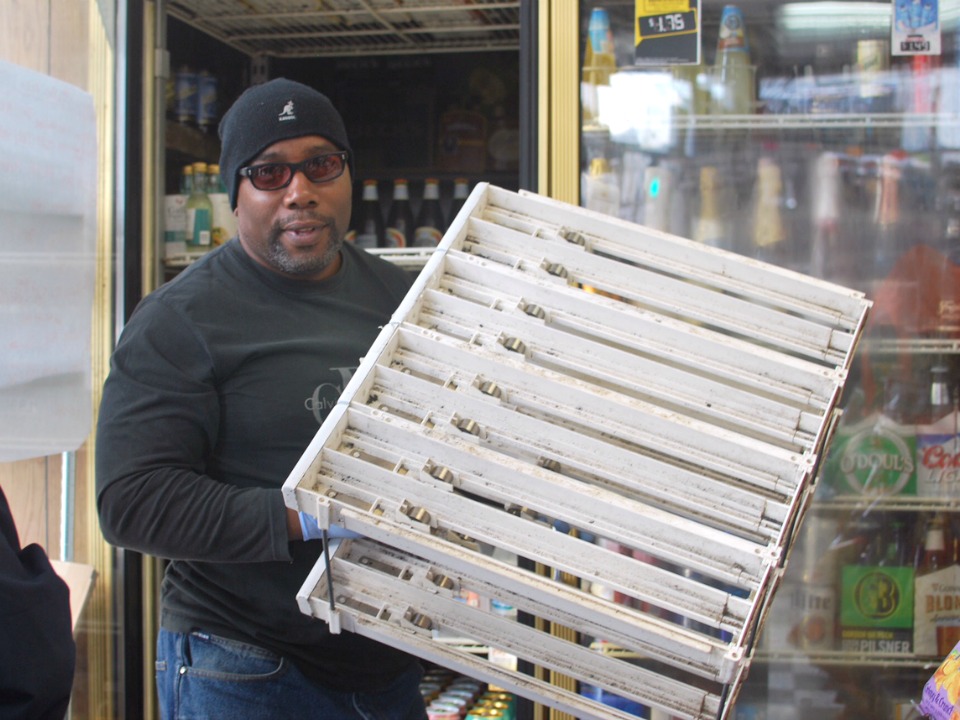
Through his participation, owner Satwinder of Dalda’s market at Eddy and Taylor, received new refrigeration and shelving units for fresh produce, healthy snacks and beverages. The shop's wine unit was relocated from the front of the store and replaced with water and 100 percent fruit juices. Dalda’s now offers a refrigerated produce corner and a healthy snack corner.
“This is the first thing you see when you come in,” said Thayer.
On Wednesday, March 25th Amigo’s Market underwent a physical store reset. They received new dry produce racks, new produce containers, and a mural in the front of the store reflective of these changes.
“It’s going to look a lot nicer, be more inviting, and save some space,” said Thayer. “Radman’s has had a huge uptake of produce, showing a 30-35 percent increase in produce units being sold since the store began its participation in early 2014."
“I think it’s helping the community a lot, it’s giving people more options. The clients are the same, but we get compliments all the time—they think it’s a new owner. It looks a lot cleaner than other places in the area,” said Radman.
“We are here to legitimatize that this is an issue in the neighborhood; everyone talks about food access, its common knowledge. We used this research to feed the purpose of our work. This work is about connecting nutrition and diet to health and wellness in a low-income community,” said Thayer.

The TL community and the community at large have been able to advocate for the a city-wide healthy retail legislation, now known as HealthyRetailSF, officially passed October 2013.
“It is very exciting to see the growth of this work; three stores were first redesigned by the Bayview Food Guardians, which paved the way for the work in the Tenderloin. With the passage of the healthy retail legislation, this work now has a central location and stable funding out of HealthyRetailSF city-wide,” said Estrada. “People from all over the city helped to get this initiative passed.”
“So much of the positive change that is happening is coming from the neighborhood, this is a community that really cares about their neighborhood and understands that they are a part of the solution,” said District 6 supervisor Jane Kim.
Radman’s will receive a community ally award at TNDC’s annual dinner in May, and will be recognized by Jane Kim for being “the first to take the plunge in the Tenderloin.”
“We want to keep it going because it’s a success,” said Kim.









